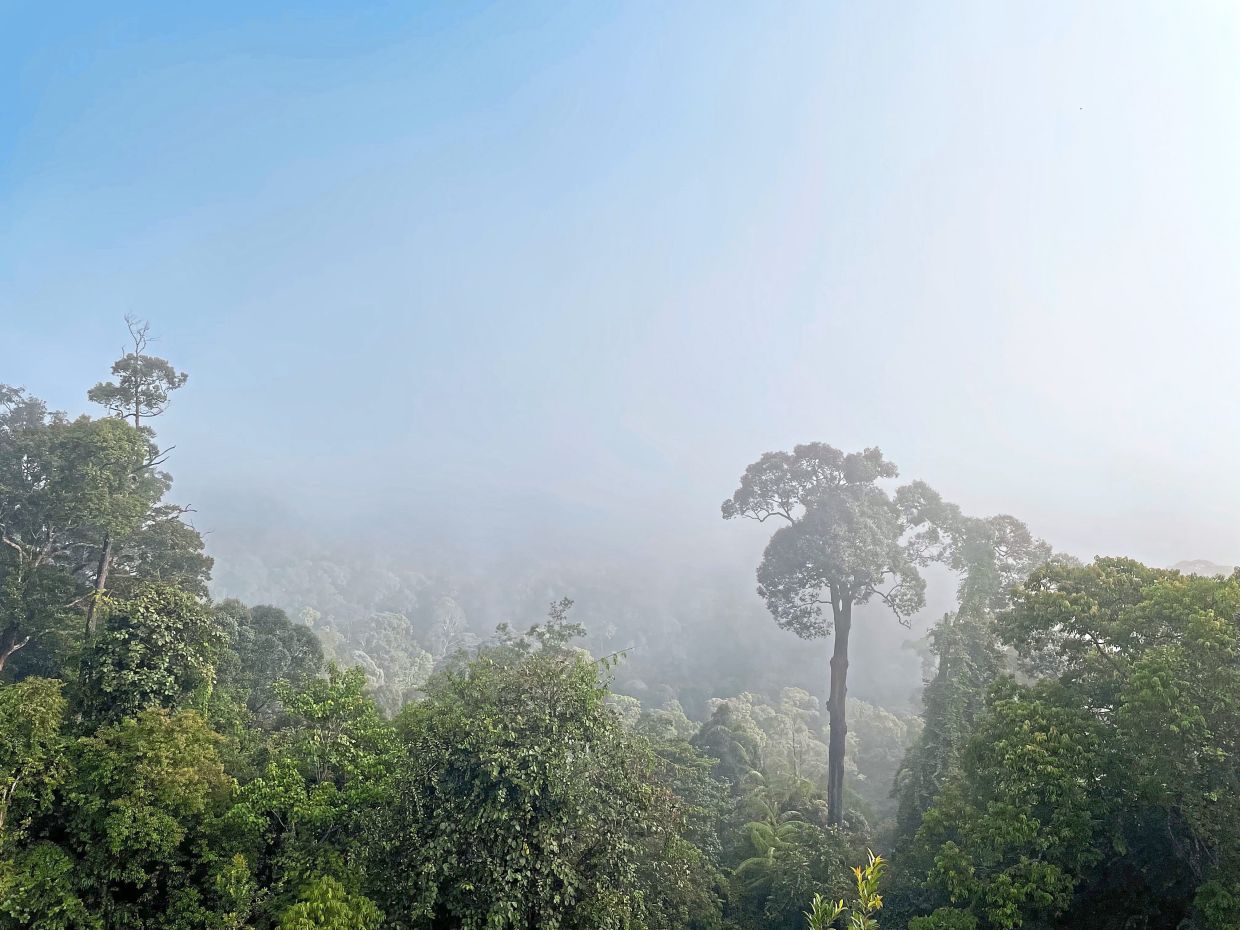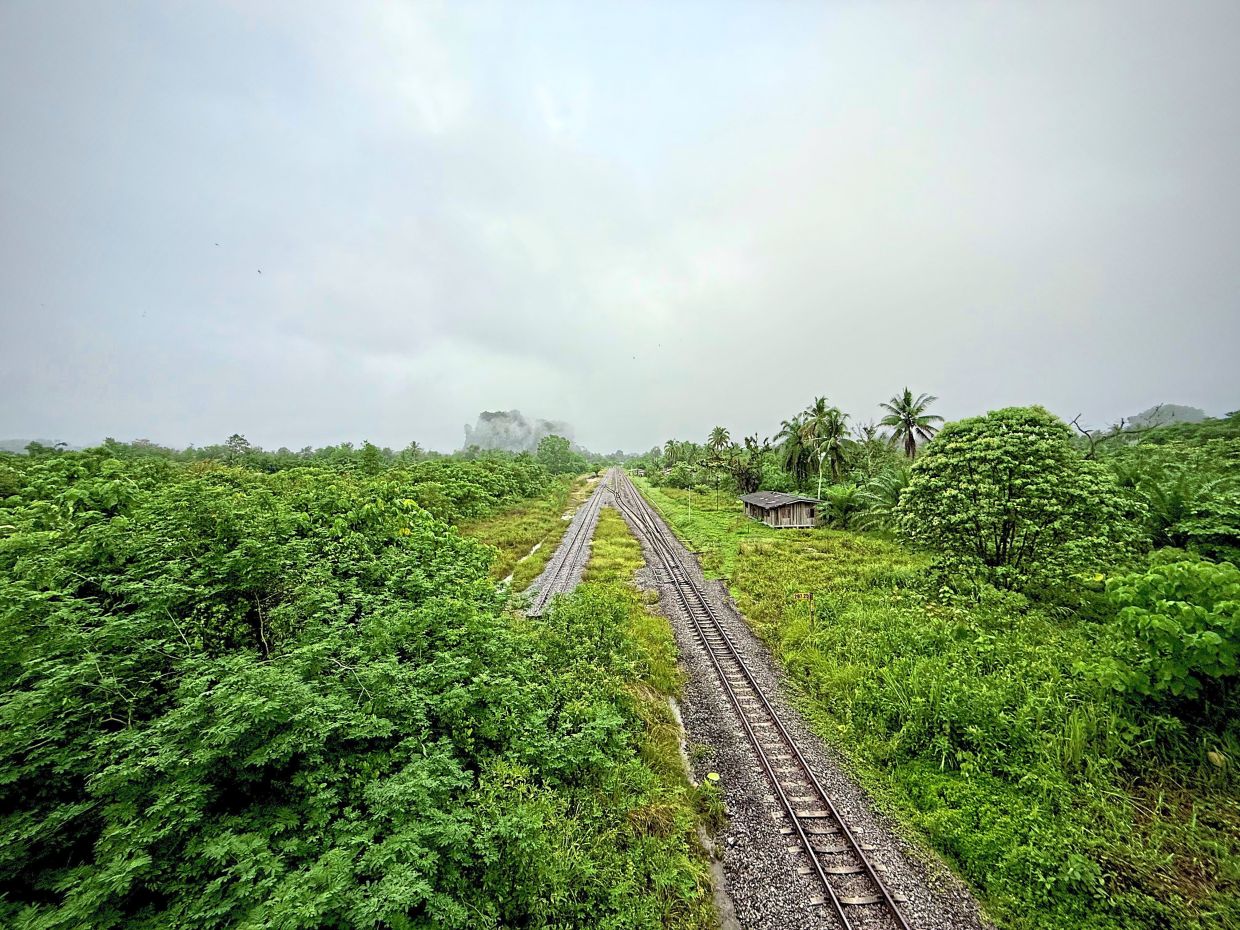Railway tracks cutting through the misty green wilderness near Merapoh, a sleepy gateway to the Taman Negara rainforest.
Travel these days often feels like a string of lists and digits: the top 10 cities in the world, the top five malls in the region, the seven best cafés in town – all crammed into 60-second reels, curated for our shrinking attention spans.
Everything is trimmed, bite-sized, numbered.
But real journeys resist countdowns and soundbites.
They’re felt through the soil underfoot, the scent of rain-soaked wood, the sudden rush of wings slicing through the canopy.
They demand presence, not metrics.
Now, imagine these numbers: a forest over 130 million years old, home to at least 350 bird species, more than 200 kinds of mammals and Shorea trees approaching two centuries in age.
This is Taman Negara – a name that simply means “national park” in Malay – but no statistic can do justice to its grandeur.
The road to this ancient rainforest, older than the Amazon, winds through the Lipis Geopark towards Gua Musang.
It’s one of the most scenic and under-appreciated drives in Malaysia.
The green, looming Titiwangsa Range suddenly gives way to a scene straight out of Jurassic Park: craggy limestone karsts jut from the land, sentinels of stone that have witnessed the ages.
The road ends at the sleepy village of Merapoh, where time seems to hold its breath.
Even the train station, with its quaint signage, feels suspended in another era.
Arrive early and you’ll catch the first rays colouring a mountainous horizon, green as far as the eye can see.
Taman Negara begins at Sungai Relau.
Here, a remarkable canopy walk unfolds – 13 platforms, seven towers – offering a rare aerial view of this ancient forest.
Prevost’s squirrels dart through the branches, while the flash of scarlet from a Black-and-red Broadbill might break the foliage like a spark.
Beneath the canopy lies Sungai Relau, its clear waters shimmering with Kelah fish that move like liquid silver in the sun.
Further inland lies Kuala Juram, gateway to the trailhead for Gunung Tahan – Peninsular Malaysia’s tallest and most demanding peak.
Birdsong and the ceaseless hum of cicadas fill the air as you hike deeper into this primeval forest.
This is the domain of the Malayan tiger, the Asian elephant, the Malayan tapir, the Siamang, the sun bear – wild beings in a wild land.
Sometimes, fresh elephant footprints press into the mud, quiet reminders that you’re not alone.
Then, a haunting, flute-like call breaks the stillness: the Great Argus, South-East Asia’s largest pheasant.
Nearly two metres from beak to tail, it’s a bird both impossibly grand and maddeningly elusive.
The path begins to rise.
Soon, you’re among ancient Shorea trees, their leaves flashing green, silver and gold.
The endless ridges of forest spill into the distance.
From atop Menara Shorea, the horizon is a sea of uninterrupted canopy.
Here, Rhinoceros Hornbills glide at eye level, while Siamangs sing loud and long across the treetops.
Rattan vines climb ever upward, reaching for the sun.
As you descend, the melodic call of the White-rumped Shama follows you to the river’s edge.
A jolt of colour startles the eye – a Scarlet-rumped Trogon, rare and radiant, blinks into view.
And then: Kuala Juram, the river that has carved its path through this forest for countless millennia.
You wonder – what dinosaurs once drank from these banks?
How many elephants have crossed here?
A Paradise Flying Snake peeks from a tree hollow, basking in sunbeams that struggle to reach the forest floor.
And just as silence settles in, a raucous, echoing laugh erupts from the canopy – the Helmeted Hornbill.
Critically endangered, this bird’s call is unforgettable.
So is the privilege of hearing it.
There are 525,600 minutes in a year, but not all are created equal.
Some – the ones spent in awe, in silence, in wild, living places like this – stretch beyond measure.













